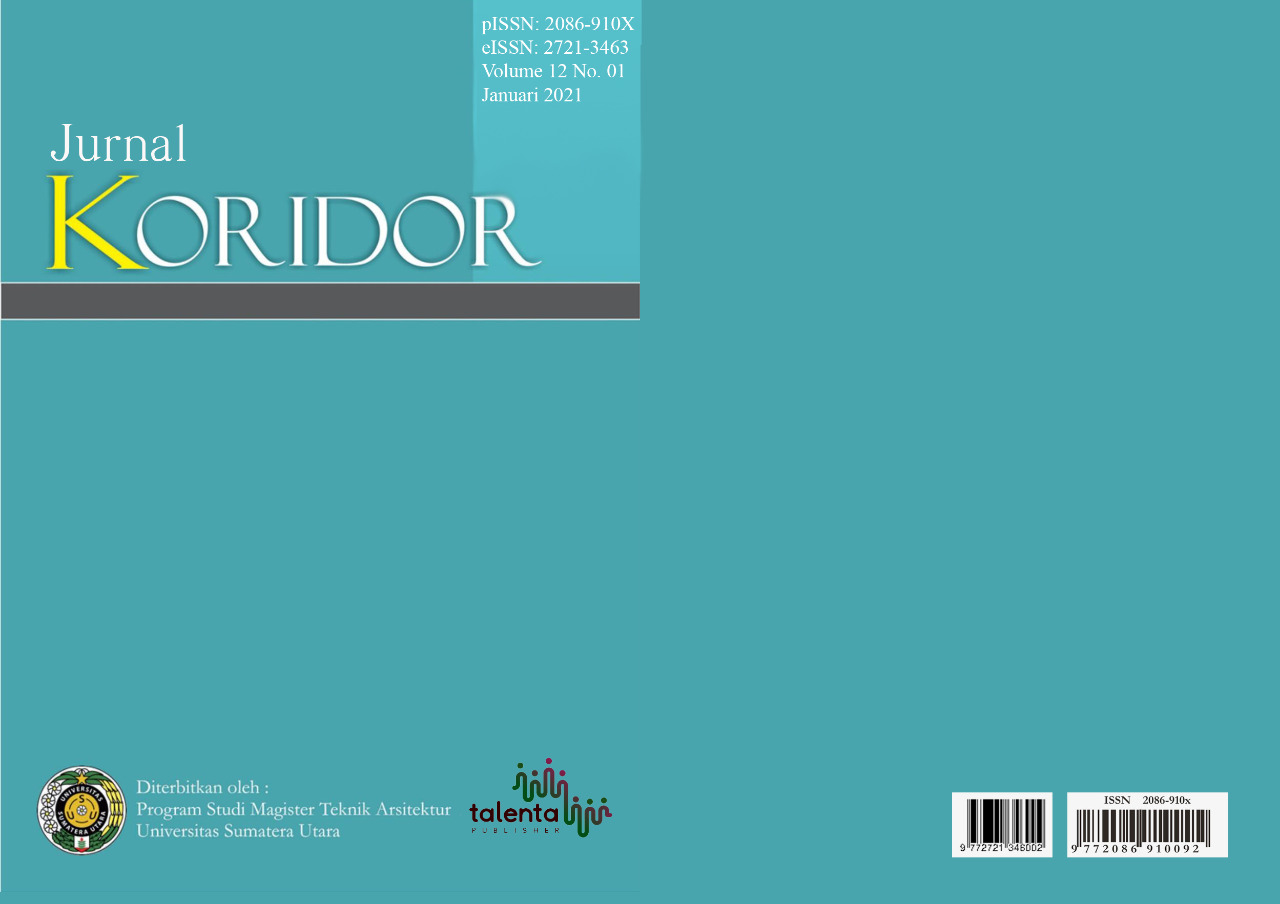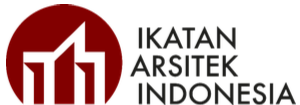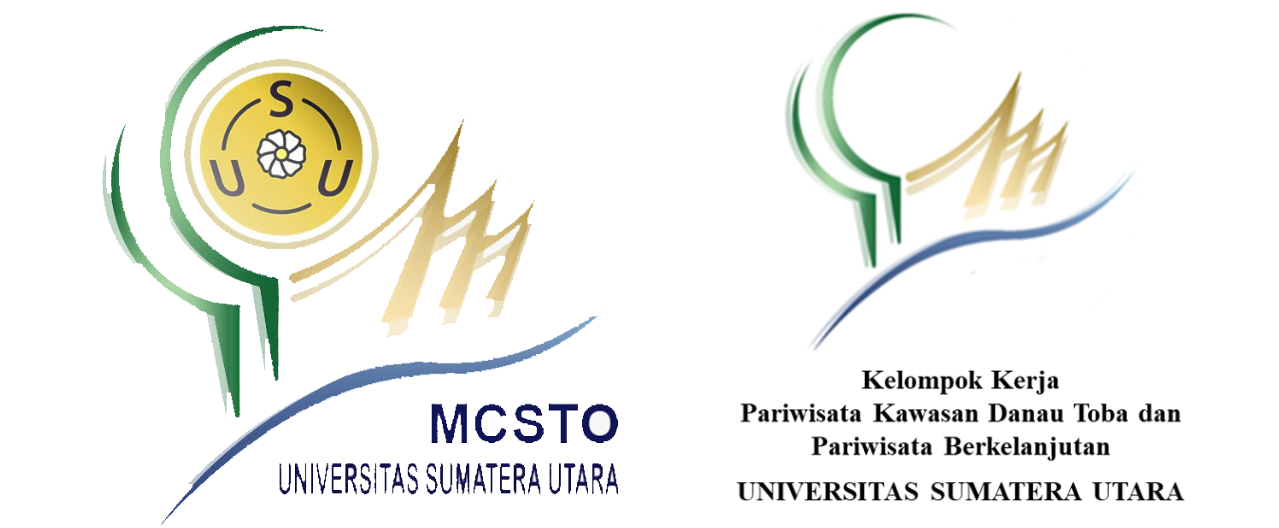PENERAPAN KONSEP ARSITEKTUR INDUSTRIAL PADA BANGUNAN HOTEL (STUDI KASUS: THE SOMOS HOTEL, KOLOMBIA)
DOI:
https://doi.org/10.32734/koridor.v12i01.5607Keywords:
industrial architecture, geometric forms, hotel, expose material, utilityAbstract
Industrial development in a country usually contributes to its national economy. Tourism as an industrial sector also contributes to increasing foreign exchange for the country. A building that is closely related to the tourism industry is a hotel. In general, hotel buildings use a concept that prioritizes comfort factors, such as: natural colors, cozy, neat, and others. Apart from this habit, some hotels use industrial concepts that prioritize functional and efficient aspects, such as: the use of unfinishing materials and utilities that are left as they are so that it gives the impression of sacrificing the comfort aspects commonly applied to hotel buildings. Therefore, this study aims to find out how to apply industrial concepts that are suitable for hotel buildings. This study uses a qualitative method with a descriptive approach. The study uses a case study on the same building and concept. Because hotels that use this concept are rarely found in Indonesia, the case study used is The Somos Hotel in Colombia. From this research, the conclusion is that the application of industrial concepts cannot be applied to all rooms in the hotel. The industrial concept in hotel buildings uses geometric shapes and firm lines, natural colors and monochrome colors, honesty in the use of materials and exposure to utility systems in public spaces.
Downloads
References
D. Hantono, Y. F. Sidabutar, and U. I. M. Hanafiah, “Kajian Ruang Publik Kota Antara Aktivitas dan Keterbatasan,†Langkau Betang J. Arsit., vol. 5, no. 2, pp. 80–86, 2018, doi: 10.26418/lantang.v5i2.29387.
N. G. E. Persada and K. R. P. Giri, “Representasi Tema Industrial Pada Toko Railroad Industrial Furniture,†in Seminar Nasional Desain dan Arsitektur (SENADA) 3, 2020, pp. 512–518.
A. Fauzi, “Pendekatan Karakteristik Bangunan Modern Industrial Pada Terminal Bus Terpadu dan Pasar Modern Cicaheum,†J. Tugas Akhir Jur. Arsit. ITENAS, vol. 9, pp. 1–8, 2019.
A. R. Amini, A. Sumadyo, and A. Marlina, “Penerapan Prinsip Arsitektur Industrial dalam Produktivitas Ruang pada Solo Creative Design Center,†Senthong, vol. 2, no. 2, pp. 395–404, 2019.
E. P. Hemanda and N. Ginting, “Design of Culinary Tourism and Shopping Center in Tongging Village (Green Architecture),†J. Koridor, vol. 11, no. 02, pp. 41–52, 2020, doi: 10.32734/koridor.v11i02.4589.
Sugiyono, Metode Penelitian Kuantitatif, Kualitatif, dan R dan D. Bandung: CV. Alfabeta, 2018.
A. H. Hakim, “Kajian Perilaku Wisatawan dan PKL di Lapangan Merdeka Bengkulu Pada Fase Normal Baru,†J. Pengemb. Kota, vol. 8, no. 2, pp. 188–199, 2020, doi: 10.14710/jpk.8.2.188-199.
I. P. Bancin and H. T. Fachrudin, “Analisa Keberagaman (Diversity) Terhadap Identitas Kota ,†J. Koridor, vol. 9, no. 1, pp. 107–112, 2018, doi: 10.32734/koridor.v9i1.1318.
A. D. Nasution, W. Zahrah, and N. Ginting, “Public Open Space as the Only Urban Space for Walking: Sumatera Utara Experience,†IOP Conf. Ser. Earth Environ. Sci., vol. 126, 2018, doi:
1088/1755-1315/126/1/012215.
I. F. Pane, M. N. Loebis, I. Azhari, N. Ginting, and D. D. Harisdani, “The Study of the Influence of Functionalism and International Style on Architecture Development in Medan City,†IOP Conf. Ser. Mater. Sci. Eng., vol. 309, p., 2018, doi: 10.1088/1757-899X/309/1/012021.
L. Jevremovic, M. Vasic, and M. Jordanovic, “Aesthetics of Industrial Architecture in The Context of Industrial Buildings Conversion,†in IV International Symposium for Students of Doctoral Studies in The Fields of Civil Engineering, Architecture and Environmental Protection, 2012, pp. 80–87.
M. F. Pradana, “Desain Interior Mokko Factory & Coffe Bergaya Modern Industrial Sebagai Sarana Informasi Perkembangan Penerbangan Indonesia,†Institut Teknologi Sepuluh November, Surabaya, 2016.
D. Harefa, S. Silitonga, and R. Pakpahan, “Study Of The Elements Of Facade Of Colonial Buildings, Case Study: Palm Oil Research Centre (PPKS) And Agency Of Sumatera Plantation Companies (BKS -PPS),†J. Koridor, vol. 11, no. 02, pp. 62–67, 2020, doi: 10.32734/koridor.v11i02.4645.
D. Hantono, “Pengaruh Ruang Terbuka Terhadap Kinerja Pegawai,†J. Nalars, vol. 12, no. 2, pp. 1–12, 2013, doi: 10.24853/nalars.12.2.%25p.
K. Sahar, D. Hantono, and W. Aqli, “Sekolah Tinggi Tata Boga dengan Pendekatan Arsitektur Futuristik di Jakarta,†J. Anala, vol. 8, no. 2, pp. 7–16, 2020, doi: 10.46650/anala.8.2.971.7-16.
S. Widodo, M. N. Loebis, and B. Talarosha, “Penurunan Tingkat Kebisingan Ruang Kerja Melalui Optimalisasi Fungsi Jendela Kaca pada Gedung Administrasi Bandar Udara Studi Kasus di Bandar Udara Juanda Surabaya,†J. Koridor, vol. 8, no. 1, pp. 73–85, 2017, doi: 10.32734/koridor.v8i1.1331












